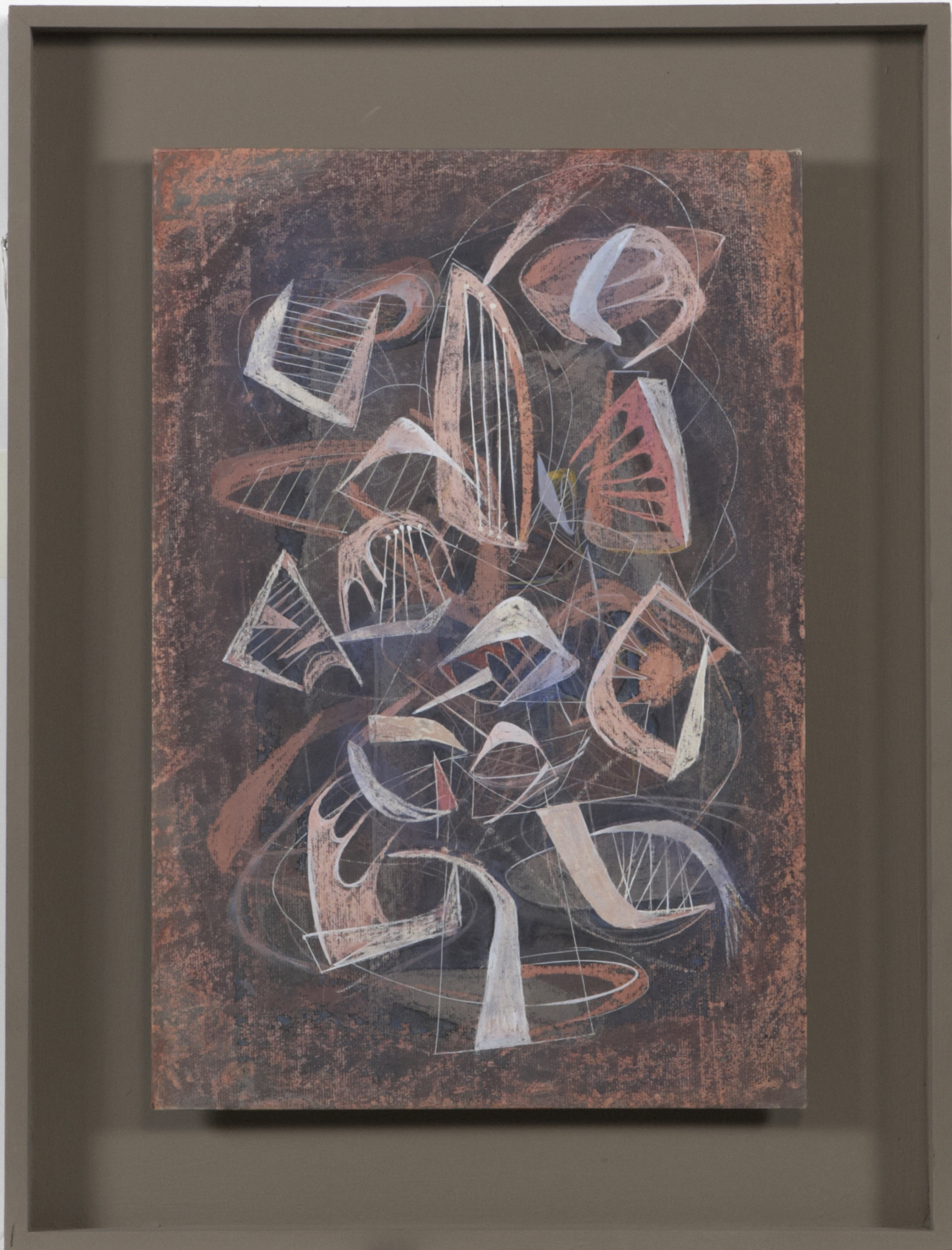William C. Seitz
First professor of modern art history at Princeton University; curator of the Department of Painting and Sculpture Exhibitions, Museum of Modern Art, New York 1960-70. Seitz began his career as an artist, studying at Albright Art School, the Art Institute of Buffalo. He married fellow artist Irma J. Siegelman in 1938. Seitz worked for the Federal Artists Project during the Depression and as a draftsman for a rubber company in Buffalo before earning a BFA from the University of Buffalo in 1948. He taught at the university there and the state teacher's college until 1949. He spent a year in Europe before attending Princeton University the next year where he held a one-person show in the Art Museum. Although enrolled in the MFA program, Seitz was already lobbying to be allowed to study abstract expressionism, then a current movement in the art world. Princeton Dept. of Art and Archaeology Chair E. Baldwin Smith (q.v.) queried Princeton alumnus (and founder of the Museum of Modern Art, New York) Alfred Barr, Jr. (q.v.) on the suitability of this as a subject for academic study and of Seitz's proposal. The famous exchange of letters is now in the archives of the Museum of Modern Art. Much of the Princeton faculty remained divided on Seitz and the subject, but eventually Seitz succeeded and, in 1955, completed the first dissertation on Abstract Expressionism. He was immediately appointed to the Princeton faculty as critic in residence and assistant professor. Seitz became a rallying point for students of the "new art"--both painters and those in art history. He founded the first non-credit painting studio at Princeton, where he advised painting students, among whom were Frank Stella. Seitz also instituted the first artist-in-residence program at Princeton. In 1960 Seitz, always known as "Bill," became Curator of the Department of Painting and Sculpture Exhibitions at the Museum of Modern Art. Here his seminal exhibitions, "The Art of Assemblage" and "The Responsive Eye" brought to the fore genres of art lesser known modern art to the public. Twenty years later Hilton Kramer referred to Seitz's inaugural Monet retrospective, "Claude Monet: Season and Moments," as the "the great Monet show." Seitz also mounted exhibitions of artists as disparate as Mark Tobey, Hans Hofmann and Edward Hopper. He rose rapidly in the modern art world. Between 1965-1970 he was Professor of Fine Arts at Brandeis University and director of the Rose Art Museum there. He organized the United States exhibition at the Ninth Biennial in Sao Paulo (1967) and the Seventh Biennial of Canadian Painting (1968). In 1970 he became the William R. Kennan Jr. Professor of Art at the University of Virginia, taking the year 1972-73 as the Kress Professor at the National Gallery of Art, Washington D.C. At age 60 he contracted cancer and died at a Charlottesville hospital. As an art historian, Seitz was able to bridge the world of museums and academics, of practicing (studio) art and art history. He brought to modern art history the visual analysis of the painter's eye, often using a technical explanation of a work as a key to its intellectual content. He was responsible for raising the study of contemporary art to an academic discipline. His early and continued espousal of the work of Stella--recommending him for Oberlin's "Three Young Americans" show in 1958 and at the Museum of Modern Art ("Responsive Eye," 1965)--were essential for that artist's career. Home Country: United States Sources: "A Continued Story: Alfred H. Barr Jr., Princeton University, and William C. Seitz." Archives of American Art Journal 21, no. 3 (1981): 8-13; Rewald, John. "The William C. Seitz Collection." Art Journal 37, no. 1 (Autumn, 1977): 49-50; Guberman, Sidney. Frank Stella: an Ilustrated Biography. New York: Rizzoli International, 1995; [obituary:] "William C. Seitz, Art Scholar, Dies; Ex-Curator at the Modern Taught at Princeton Critic in Residence Became Associate Curator." New York Times October 28, 1974, p. 34. Bibliography: Claude Monet: Seasons and Moments. New York: The Museum of Modern Art, New York, in collaboration with the Los Angeles County Museum, 1960; São Paulo 9, United States of America: Edward Hopper [and] Environment U.S.A: 1957-1967. Essays by William C. Seitz and Lloyd Goodrich. Washington, DC: Published for the National Collection of Fine Arts by the Smithsonian Institution Press, 1967; Arshile Gorky: Paintings, Drawings, Studies. New York: Museum of Modern Art, 1962; The Art of Assemblage. New York: Museum of Modern Art, 1961; What is Impressionism? Washington, DC: National Gallery of Art, 1973; Art in the Age of Aquarius: 1955-1970. Compiled and edited by Marla Price. Washington, DC: Smithsonian Institution Press, 1992. http://www.dictionaryofarthistorians.org/seitzw.htm
Selected Images of William C. Seitz
Objects at Archives of American Art (1)




